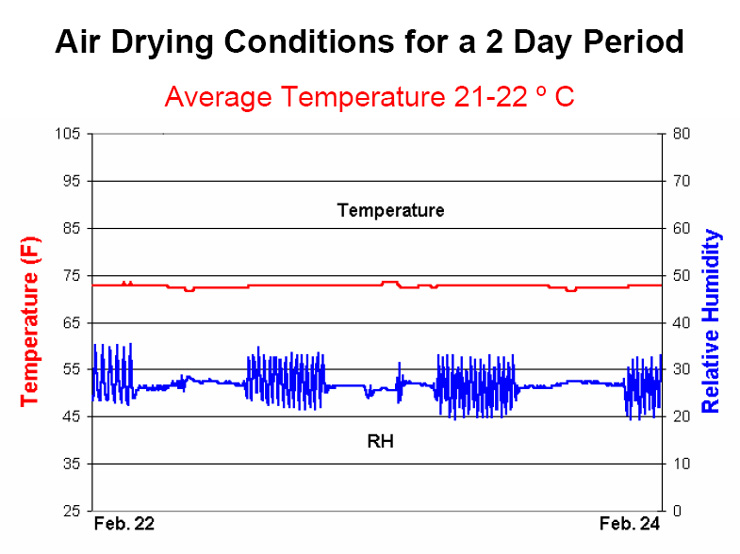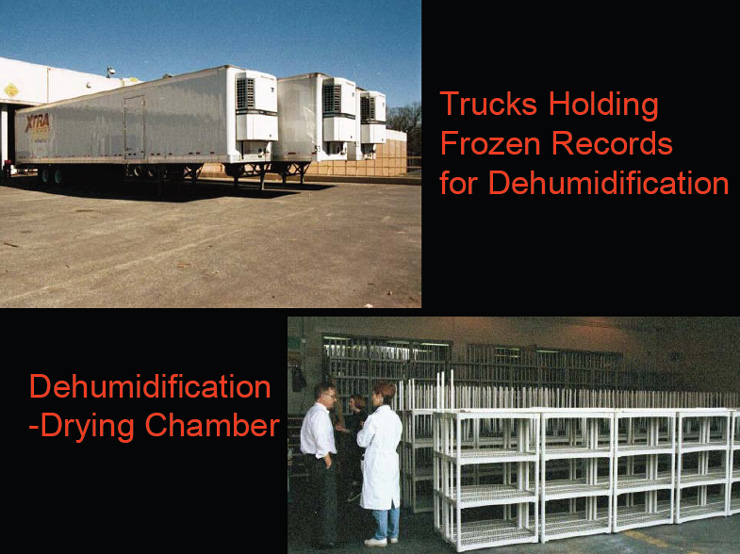
Comparison of Drying Methods
Dehumidification-drying is cited for its excellent results in drying damp collections, allowing access to items during the drying process, if desired or required. Dehumidification can be performed on-site with equipment rented from a vendor. Drying procedures can be carried out in-house by institutional staff or by professionals from the drying service. Items may also be sent to the vendor for the same services. Drying is completed within several days, depending on the moisture content of materials.
On-site dehumidification-drying is an attractive option when dealing with large quantities of restricted materials. As a chamber was already up and running at a National Archives facility, we included dehumidification as a drying method to be examined. We compared the results of dehumidification drying conducted by our staff to those carried out by a vendor off-site using the same method.
To confine the dry air needed, a chamber had been constructed in a loading dock bay. Dehumidification equipment was rented and installed by the contractor and drying procedures were carried out by Archives staff.

